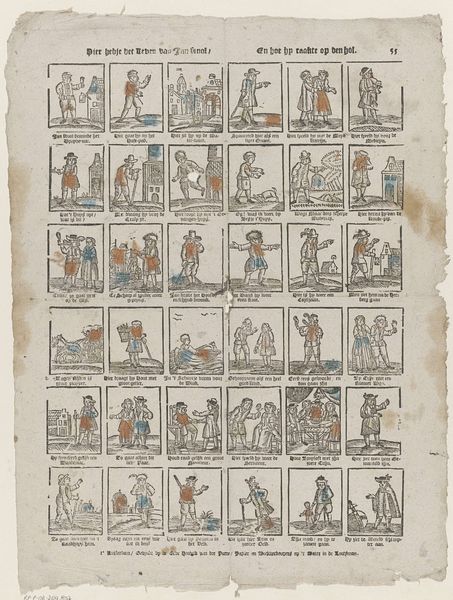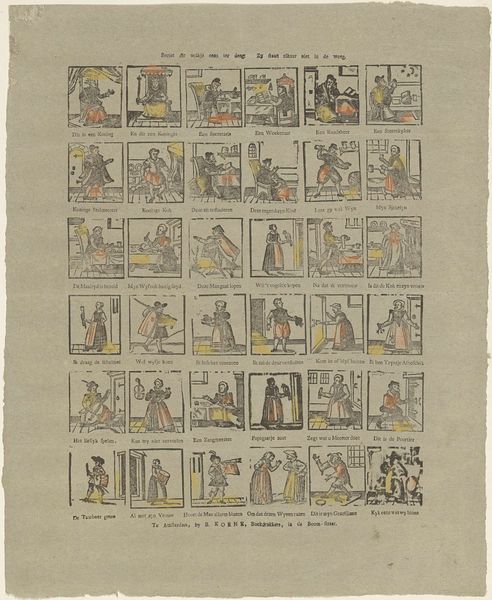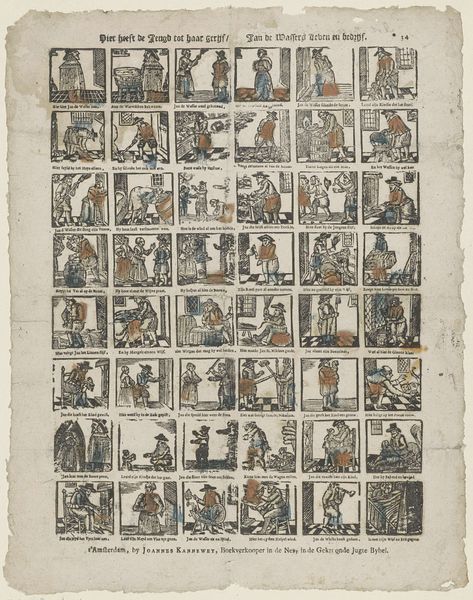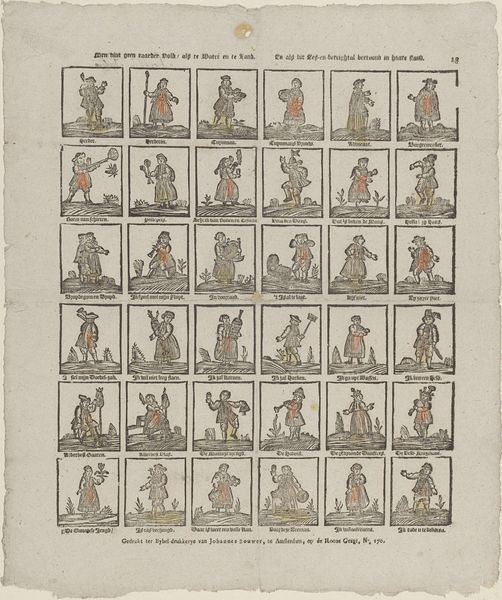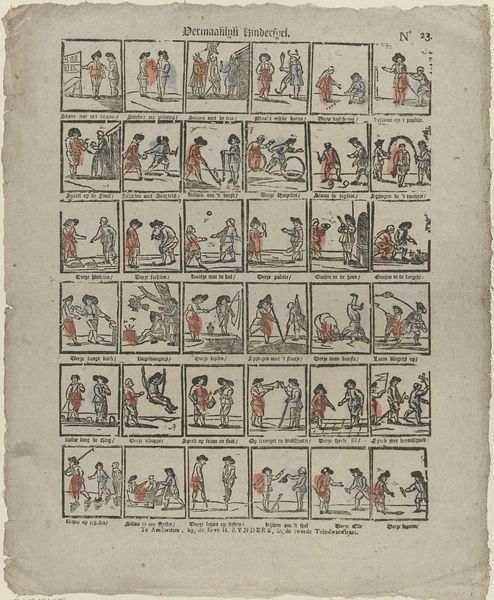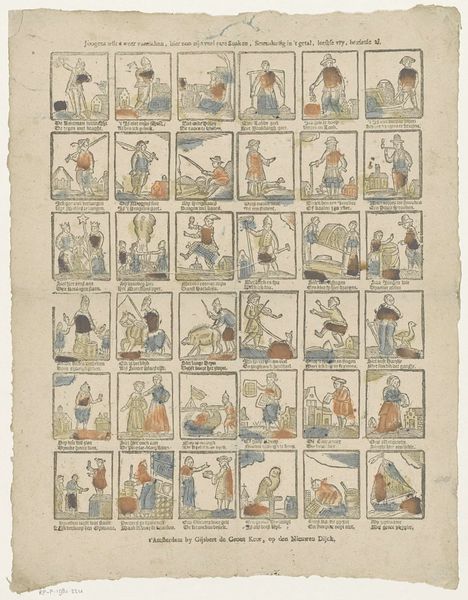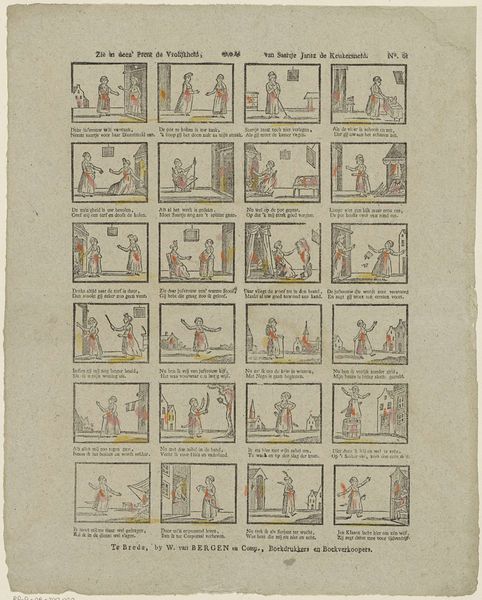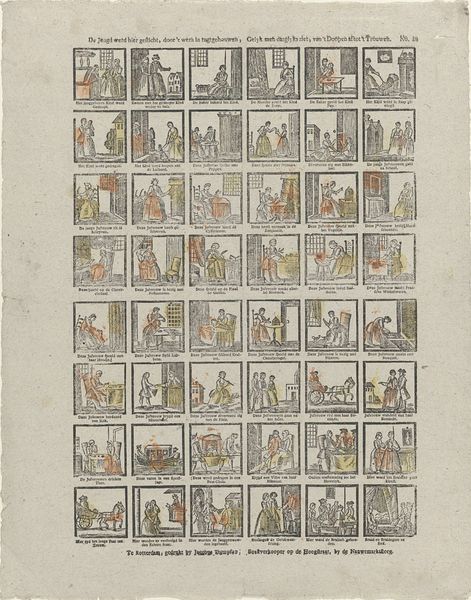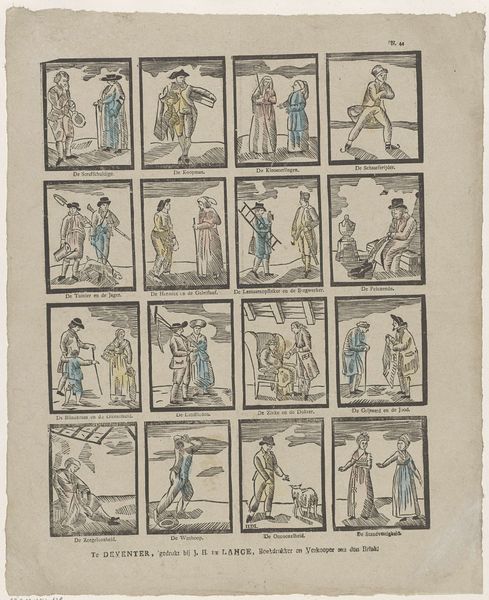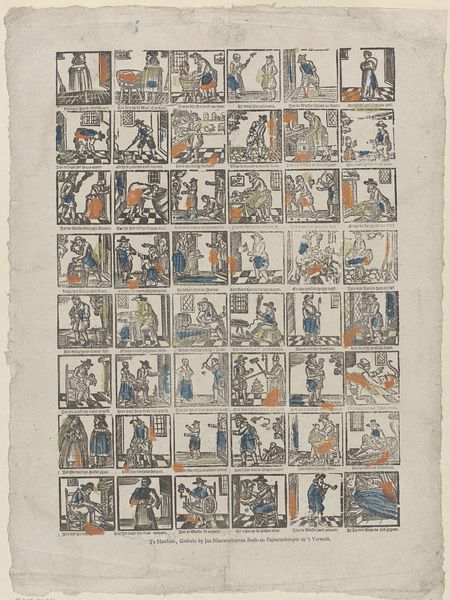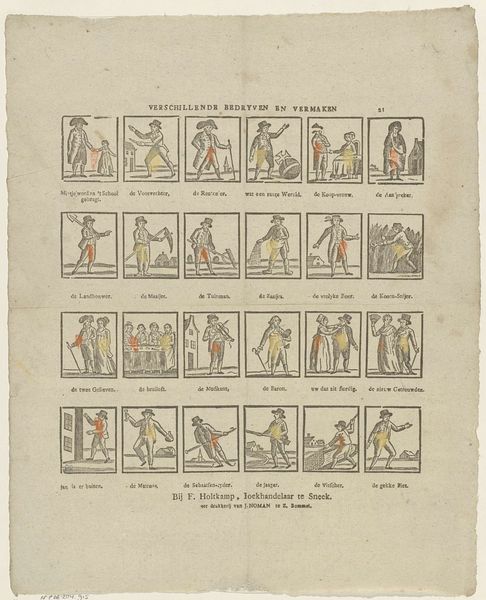
print, etching
#
dutch-golden-age
# print
#
etching
#
genre-painting
Dimensions: height 417 mm, width 310 mm
Copyright: Rijks Museum: Open Domain
Curator: Here we have “Kammen en brillen te koop,” or "Combs and Glasses for Sale," an etching that was created sometime between 1767 and 1793, now residing here at the Rijksmuseum. Editor: It reminds me of a charming, if slightly dizzying, patchwork quilt of everyday life. It has that kind of old-world storybook quality to it, but, truthfully, all the tiny details sort of make my eyes swim! Curator: That "storybook quality," I think, emerges from its categorization as a genre painting, which is known for capturing these small scenes from daily life, the hustle and bustle of regular people doing regular things, selling their wares. The interesting choice is how each panel, though a glimpse into a regular task or scene, are then compartmentalized on one sheet. Editor: It’s as if someone carefully documented all the local artisans—a street performer, maybe someone with sacks of coal, and a guy grinding something at a stone. The scenes themselves feel so transient, a bit melancholy somehow. They feel like glimpses, or dreams. But placing them all together like this suggests this strange interconnectedness… everyone needs everyone, just to keep going. Curator: Exactly! In this pre-industrial age, individual crafts and services are the bedrock of society. But, stepping back, the repetition of human forms becomes symbolic. Each little panel carries the larger cultural weight of an entire economic system. Do you think the restricted color palette enhances that? The red and blue stand out as so calculated. Editor: Well, the splashes of color, red and blue especially, act as anchors. Otherwise, I think it might all just kind of blur into itself! They add warmth to something that could otherwise feel quite distant and antiquated. The blue especially pops. They keep you interested when maybe the actual activity being illustrated doesn’t feel that interesting. Curator: That's a perfect description of what prints can offer us. On the one hand, we have the surface observation, documentation of social rituals of exchange, as well as this sort of underlying structure of repeating needs. I wonder what viewers today might identify with, whether it is the commerce that remains constant, or whether we, too, see a storybook of images? Editor: Definitely! And as time passes, maybe viewers recognize some universal thread. As people continue working, making, buying and selling, it speaks of a strange and somewhat lovely inevitability.
Comments
No comments
Be the first to comment and join the conversation on the ultimate creative platform.
